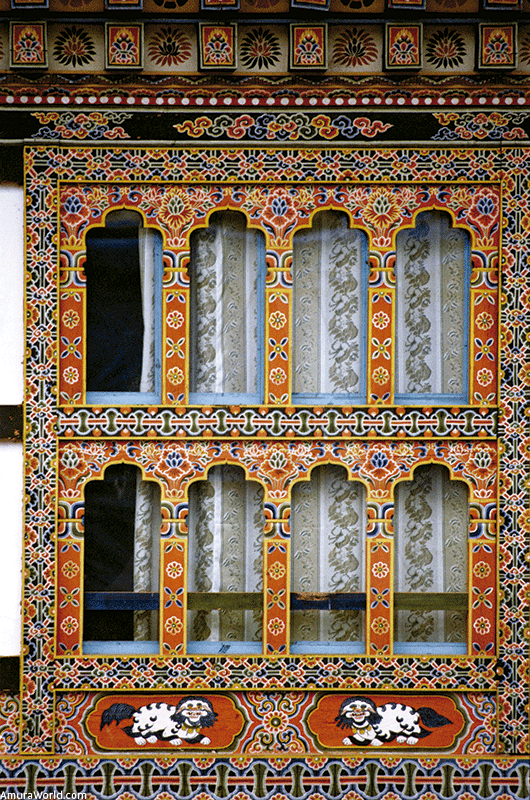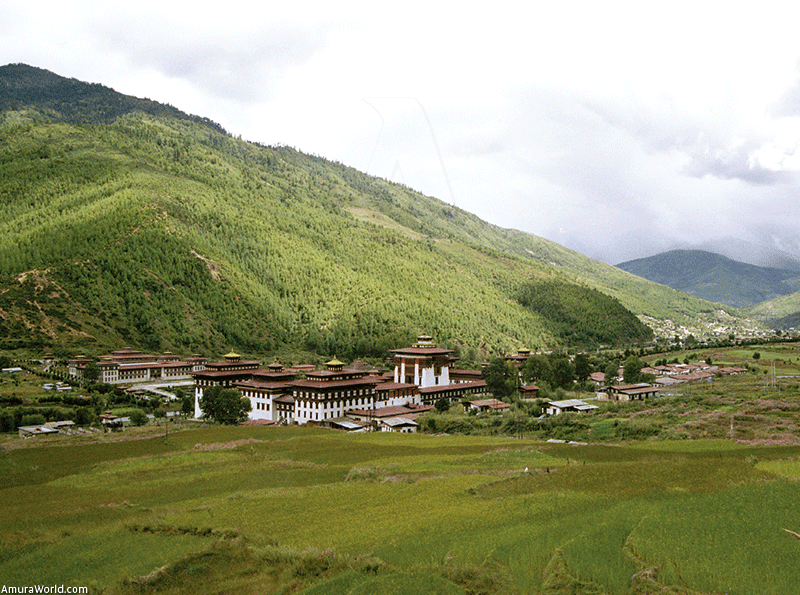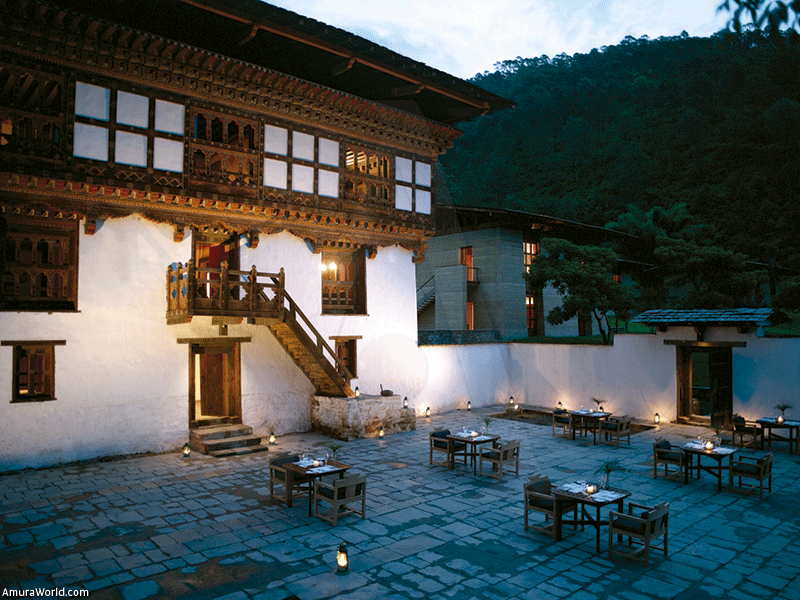So Close To Heaven
Bhutan is a country quite unlike any other. Landlocked in the north by China, and in the south by India, it is widely recognised as the last surviving Buddhist Himalayan Kingdom. Bhutan has lived in self-imposed isolation for much of the 20th century and it was only in the 1970’s that it opened its borders to a handful of visitors. Today, life in Bhutan continues as before, free of global influence and true to its cultural, religious and social traditions. In a modern world, it provides a wonderful insight into life in the Himalayas as it was. For this reason it is viewed as one of the last great travel destinations in the world today.
Geographically, Bhutan descends from the highest Alps, which exceed 7,000 metres in height to the plains in the south that are an altitude of just 300 metres. Through this dramatic fall, the rivers run from north to south and over the years have forged deep valleys and ravines that are separated by lofty ridges and mountain passes. Each of these valleys has a scenic beauty that separates one from another and it is these same valleys that provide the opportunity for a unique and wonderful journey.
In the western and central valleys of Bhutan lies Amankora, deriving its name from two words, ‘aman’ meaning ‘peace’ in Sanskrit and ‘kora’ or ‘circular pilgrimage’ from Dzongkha, the Bhutanese language. Scattered throughout these valleys is Amankora, a series of lodges, each with its own character, setting and experience.
Guests may either visit one of the lodges or, to best experience all that Bhutan has to offer, Amanresorts can plan a tailor-made journey, including one or more of the Amankora lodges located in Paro, Punakha, Gangtey or Thimphu.
Bután transmits a special feeling of calm and serenity, which wraps you in every single moment that you enter in its kingdom. The people are deeply religious continuing the Buddhism Mahayana. The spirituality air is evident, even in the cities where the roll of the grinders of prayer, the murmur of the mantras and the shine of the butter lamps in the houses, are still important characteristics of the everyday life.
The monasteries, temples and the religious monuments are found through all the landscape, pointing the important presence of the Buddhism. Monks of any age inhabit for any corner of Bhutan. Is a spiritual land where each Dzong (fortress), monastery, rock, valley, tree and mountain exist with their own spirit. And each one has its own history. Each peak of the mountains is adorned with a monastery or a Choerten (Stupa) and each cave a sacred sanctuary.
The first sensation that is perceived from the air is that of a gigantic forest (Bután is one of the countries with greater forest surface of the world). Also it calls the attention the numerous mountains. For the butaneses nevertheless these not alone mountains are refuge of the neighboring giants if not the dwelling of the God.
There are many festivals in Bhutan but the more important are the religious ones and deeply symbolic. Tsechus are the main festivals in which the dances are executed by men and monks. The men with masks of angry and serene form whirl, each step with spiritual deep meanings. It is a time of the year when the Bhutanese test its religious passion and also a time to show its beautiful ornaments and the handmade suits – Gho for the man and Kira for the woman.
Interesting Places
• Paro Valley
The entry point for all travel to Bhutan is Paro Valley. Bordered by forested mountain peaks. Paro Valley sits on an elevation of 2,250 metres and is a mix of small villages, historic buildings and monuments and wonderfully terraced fields growing crops.
• Thimphu
Thimphu lies in a steep valley surrounded by richly forested mountains at the edge of river Chhu, and to this day remains the world’s only capital without traffic lights. The colored and artistic facades of their buildings give to the city a medieval air. Thimphu, being the capital, is home to many attractions: The National Textile Museum, Folk Heritage Museum and National Library, where Bhutanese craftsmen continue to pursue the traditional art of xylography, carving new wood blocks to print old manuscripts.
• Punakha Valley
Punakha has an interesting history. It was the winter capital of Bhutan for a period of 300 years until Thimphu was made the official capital in the 1950’s. At an elevation of 1,300 metres and with its temperate climate, this valley is the market garden of the country, where produce grows year round and many Bhutanese reside during the cooler winter months. It is the site of one of Bhutan’s most historically important dzongs, the magnificent 17th century Punakha Dzong.
Other attractions of Bhutan
• Culture
In many aspects, Bután seems to be found between Feudalism and the contemporary age: the monks transcribe old Buddhist manuscripts in its modern computers, archers are dressed to the old fashion and they employ arches and arrows done with metal alloys, while the videos rent stores growth thanks to local people, since television has been recently introduced (was prohibited in all the country because it believed that could affect the cultural wealth of Bután).
• Requirements
All citizens need a visa to enter Bhutan. The independent tourism is not allowed, only the organized one. If the travellers arrive at Bután without subject to authorization of the authority of tourism, the authorities would not extend the visa and they cannot enter the country. A severe control of the tourism exists: for each day of planned and authorized stay, is necessary to refund a minimum money rate the country. All the tourists that desire to travel to Bhutan should reserve their tour through a local travel agency. The total rate is set for Bhutan Tourism Office, which will offer to the travellers all its foods, accommodations, transportations, guides. This its done in order to maintain the number of tourists in a level that do not affect the environment, neither the way of life of the nation.
• Gastronomy
The dishes of Bhutan are characterized for their exquisite fantasy and their exotic combinations. Given the tourist control, the travellers used to eat in the hotels (whose buffets offer quite various dishes), but some suppers in local restaurants can be arranged to taste some home-cooking flavours, ¡but very spicy! The Bhutanese kitchen is based mainly in the Chile. The most popular dish is the ema datse, elaborated with enormous and green spring up of Chile bathed in a cheese sauce. Although the white rice abounds, the Bhutanese’s prefer other varieties of colored rice, as the red rice.
• Shopping
The main purchases that can be done in Bhutan are products with high religious and spiritual content. Thus, the Books of Bhutanese Prayers are sacred manuscripts on a handmade role and decorated with engravings. The precious local craft offers masks of alive colors and “grinders of prayers”, manufactured in wood carved and noble metals.
Info
Jolanda Bonazzola
Servicios Especiales de Leisure
BCD Travel
Tel: 9138 3023
This email address is being protected from spambots. You need JavaScript enabled to view it.
Text: Jolanda Bonazzola de BCD Travel ± Photo: Jolanda Bonazzola de BCD Travel.











